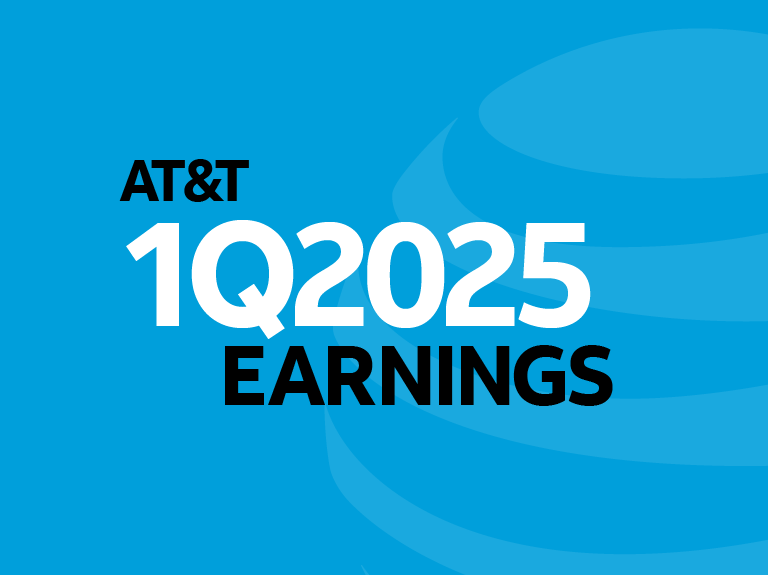AT&T CFO John Stephens Updates Shareholders
John Stephens, senior executive vice president and chief financial officer of AT&T Inc.* (NYSE:T), updated shareholders in his presentation today at the Citi Global TMT West Conference.
Common share retirements. Stephens said that AT&T has retired about 140 million shares it issued for the Time Warner acquisition, including about 80 million shares so far in 2020 under its accelerated share repurchase (ASR) agreement. Funding for the ASR-related share retirements will adversely affect the company’s first quarter 2020 net debt-to-adjusted EBITDA ratio, but Stephens said the company expects this ratio will come back down during the rest of 2020.1
2019 results. While the company’s fourth-quarter and full-year 2019 results won’t be announced until January 29, 2020, Stephens said the company continues to expect that it met all of its 2019 commitments to shareholders. AT&T’s fourth-quarter 2019 revenues will reflect lower Warner Bros. theatrical revenues as compared to a strong fourth-quarter 2018 film slate. Additionally, investment in HBO Max in the fourth quarter, in the form of new content production, foregone licensing revenues and platform costs, pressured operating income about $500 million. Fourth-quarter revenues are also expected to reflect U.S. wireless equipment sales revenue slightly lower than fourth quarter of 2018. As in prior quarters, the company expects to see foreign exchange rate pressure in some of its international operations.
2020 guidance.2 Stephens reiterated AT&T’s 2020 guidance, which includes expectations for:
- Adjusted EPS in the $3.60 to $3.70 range, including HBO Max investment of $1.5 billion to $2 billion and significant share retirements.
- Adjusted EBITDA margin stable with 2019 levels, including HBO Max investment, service revenue growth, merger synergies and new cost initiatives.3
- Free cash flow in the $28 billion range with a dividend payout ratio in the low 50% range.4
- Gross capital investment in the $20 billion range, reflecting downward bias from fiber build completion and the company’s capital efficient one-touch wireless spectrum deployment.5
- Revenue growth of 1-2%, including wireless equipment revenue gains from 5G device adoption.
2Adjustments to 2020 EPS include merger-related amortization in the range of $6.5 billion, a non-cash mark-to-market benefit plan gain/loss, merger integration and other adjustments. We expect the mark-to-market adjustment which is driven by interest rates and investment returns that are not reasonably estimable at this time, to be a significant item. Our EPS, free cash flow and EBITDA estimates depend on future levels of revenues and expenses which are not reasonably estimable at this time. Accordingly, we cannot provide a reconciliation between our non-GAAP metrics and the reported GAAP metrics without unreasonable effort.
Stephens also reiterated that the company is focused on exceeding the annual 6% to 8% reduction in network operational costs it has achieved in recent years. He said that the company has begun several cost reduction initiatives as it targets an incremental 4% in cost reductions driven primarily by lower labor-related costs and corporate overhead. The company has already virtualized 71% of its network functions and expects to meet its goal of 75% by the end of 2020.
1 Net Debt to EBITDA ratios are non-GAAP financial measures that are frequently used by investors and credit rating agencies to provide relevant and useful information. Our Net Debt to Adjusted EBITDA ratio is calculated by dividing the Net Debt by the sum of the most recent four quarters Adjusted EBITDA.
2 See above.
3 EBITDA margin is operating income before depreciation and amortization, divided by total revenues.
4 Free cash flow is cash from operating activities minus capital expenditures. Free cash flow dividend payout ratio is dividends divided by free cash flow.
5 Excludes expected FirstNet reimbursements in the $1 billion range; includes potential vendor financing.



